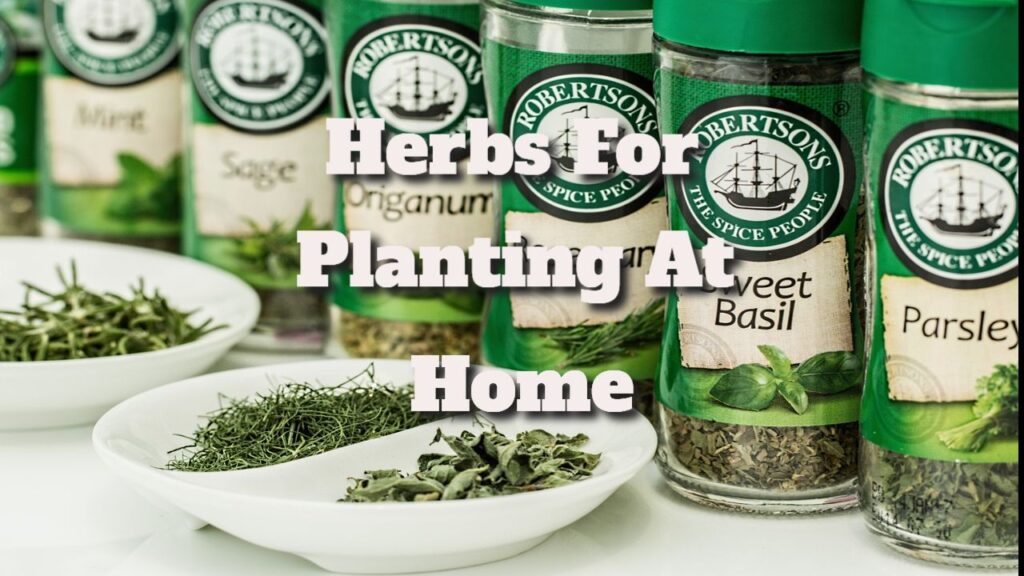Explore the Most Popular Herb Varieties Flourishing in the UK
Which Herbs Are Commonly Grown in the UK Gardens?

As you embark on your journey into herb gardening, understanding the wide array of herbs that are typically cultivated across the United Kingdom is essential for enhancing your cooking and gardening experiences. These herbs are particularly valued for their resilience in the unique UK climate and their straightforward cultivation process. Some key herbs to consider for your garden include:
These herbs not only elevate the flavour profiles of various dishes but also offer a multitude of health benefits, making them crucial selections for gardens throughout the UK. For those new to gardening, these resilient and adaptable herbs provide excellent starting points, allowing for a fulfilling and productive gardening journey.
How Can You Recognize the Unique Features of UK Herbs?
Recognizing UK herbs involves identifying their distinct physical characteristics, which assists in differentiating one herb from another. For example, mint is easily identifiable due to its strong, aromatic scent and square stems, while rosemary has needle-like leaves and a woody stem. Each herb possesses specific traits that facilitate easy identification, making it simpler for beginners to navigate.
Visiting local garden centres or farmers’ markets presents an excellent opportunity for novices to familiarize themselves with these plants. Look for herbs exhibiting vibrant colors and robust foliage, as any signs of wilting or discoloration often indicate poor health. For instance, basil features smooth, broad leaves, while chives have thin, hollow stalks reminiscent of green onions. Gaining an understanding of these characteristics not only helps in selecting healthy plants but also enriches your entire gardening experience.
Which Herbs Are Ideal for Novice Gardeners in the UK?
Starting a herb garden can be an immensely satisfying venture, particularly when selecting the right varieties to cultivate. For those new to gardening, opting for herbs that flourish in the temperate climate of the UK and require minimal maintenance are the best choices. Consider these beginner-friendly herbs:
- parsley
- Chives
- Mint
- Thyme
- Oregano
- Rosemary
- Sage
- Basil
These herbs thrive with simple watering and sufficient sunlight, making them practical additions to any kitchen. Embarking on your gardening journey with these selections will help build your confidence and competence, paving the way for more advanced gardening projects in the future.
Essential Steps for Preparing Your UK Garden for Herb Cultivation

Which Soil Types Are Best for Growing Herbs in the UK?
The success of a flourishing herb garden is largely contingent on the quality of the soil. Herbs typically thrive in well-drained soils, making loam and sandy loam the most suitable choices. These soil types provide an ideal balance of drainage and nutrient retention, essential for healthy plant growth and development.
Before planting, conducting a soil test to determine pH levels and nutrient content is crucial. A pH range of 6.0 to 7.0 is optimal for most herbs. Enhancing your existing soil with organic matter, such as compost or well-rotted manure, can significantly improve its fertility and structure. This preparatory step ensures that your herbs have the best possible foundation for growth, enabling them to flourish throughout their lifecycle.
How to Choose the Best Location for Planting UK Herbs?
Selecting the appropriate location for your herb garden is a fundamental factor in its success. Most UK herbs require a minimum of six hours of sunlight each day to thrive. Therefore, it’s important to identify a spot in your garden that receives ample sunlight while avoiding excessive exposure to harsh winds that can potentially damage delicate plants.
Consider the microclimates in your garden; south-facing areas typically provide optimal conditions for heat-loving herbs like basil and thyme. Conversely, more sheltered spots can be ideal for herbs such as sage and chives, which can tolerate cooler temperatures. A thoughtful approach to positioning your herb garden will maximize growth potential and overall yield, ensuring a productive and flourishing garden.
How to Effectively Prepare UK Soil for Herb Planting?

Proper soil preparation is essential for establishing a successful herb garden. Begin by clearing the area of weeds, stones, and other debris to create a clean and inviting environment for your plants. Next, work the soil to a depth of approximately 12 inches, breaking up clumps and aerating the soil to promote healthy root development.
To enrich the soil, incorporate organic matter such as compost or well-rotted manure. This addition will not only enhance nutrient content but also improve soil texture and moisture retention. Once the soil is enriched, rake it to create a level surface, facilitating even planting and growth. A well-prepared bed will lay the groundwork for a thriving herb garden that meets your culinary needs.
- Clear the area of debris.
- Work the soil to a depth of 12 inches.
- Incorporate organic matter like compost.
- Level the surface for even planting.
What Are the Best Watering and Drainage Practices for UK Herb Gardens?
Effective watering and proper drainage are crucial components for nurturing healthy herbs. Ensuring adequate drainage helps prevent root rot, a common problem associated with overwatered plants. Incorporating organic matter into your soil increases drainage while retaining essential moisture.
Water your herbs early in the morning, allowing foliage to dry throughout the day and reducing the risk of fungal diseases. Generally, herbs need approximately one inch of water weekly, although this requirement may vary based on rainfall and soil conditions. Applying a layer of mulch around your herbs can assist in moisture retention and weed suppression, creating an ideal environment for growth while simplifying maintenance tasks.
Professional Guidance on Selecting Herbs for New Gardeners
What Are Some Inspiring Examples of Successful Herb Gardens in the UK?
Exploring inspiring and successful herb gardens across the UK can provide invaluable guidance and encouragement for novice gardeners. For example, the Royal Horticultural Society (RHS) gardens often showcase vibrant herb displays, demonstrating how herbs can be seamlessly integrated into various garden designs. Another exemplary location is Kew Gardens, which highlights the diversity of herbs in both culinary and medicinal applications.
In smaller environments, community gardens found in urban areas frequently include flourishing herb patches that adapt well to limited space. These gardens serve as excellent models for beginners, illustrating the potential of herbs in compact settings. By observing the structure and management of these gardens, novices can gather practical tips on spacing, companion planting, and ongoing maintenance that contribute to successful herb cultivation.
- Royal Horticultural Society Gardens
- Kew Gardens
- Urban community gardens
- Local allotments
What Actionable Steps Can You Take to Select the Right UK Herbs for Your Garden?
Choosing the right herbs for your garden necessitates thoughtful consideration of both environmental conditions and personal culinary preferences. Start by assessing the sunlight and space available in your garden. For instance, if you have a sunny patio, consider planting herbs like basil and oregano which thrive in bright conditions.
Next, reflect on how you intend to use these herbs in your cooking. If you have a penchant for Mediterranean cuisine, growing rosemary and thyme could be particularly advantageous. Finally, consult local gardening centres or experienced gardeners to gain insights into which herbs perform best in your specific region. This local knowledge can significantly bolster your chances of gardening success and yield flavorful results.
What Expert Insights Can You Provide on Growth Patterns of UK Herbs?
Understanding the growth patterns of herbs is essential for effective planting and harvesting. Most UK herbs exhibit distinct growth cycles; for example, some are annuals, like basil, which must be replanted each year, while others, such as rosemary, are perennials capable of surviving multiple seasons.
Plan your planting schedule around these growth cycles to ensure that you harvest at the peak of flavor. For instance, leafy herbs are typically best harvested just before they flower, while woody herbs can be pruned back to encourage new growth. Familiarizing yourself with these growth patterns enables better management of your herb garden, optimizing crop yields and ensuring a continuous supply of fresh herbs.
Proven Techniques for Planting and Caring for UK Herbs
How Should You Plant UK Herbs for Maximum Success?
Employing proper planting techniques is crucial for the success of your herb garden. Ensure that each herb is planted at the correct depth and spaced adequately to accommodate its growth. Generally, smaller herbs, such as chives, should be planted about 15-20 cm apart, while larger herbs like rosemary may require a spacing of 30-45 cm.
Begin by digging holes that are twice the width of the root ball of each herb plant. Place the herb in the hole and backfill with soil, pressing gently to eliminate air pockets. Water thoroughly after planting to help establish the roots in their new environment. Adhering to these guidelines will give your herbs the best chance to thrive and flourish, culminating in a bountiful harvest.
What Are the Specific Watering Requirements for UK Herbs?
Watering needs can vary significantly among different herbs, but a general guideline is to provide approximately one inch of water per week. This may need to be adjusted based on rainfall and soil type. Herbs such as thyme and rosemary prefer drier conditions, while basil and mint require more consistent moisture.
It is best to water deeply but infrequently, encouraging roots to grow deeper into the soil and increasing their resilience to dry spells. Consider using a soil moisture meter to accurately gauge when to water, ensuring each herb’s specific needs are met without the risk of overwatering. This careful attention to watering will promote robust growth and healthy plants.
What Techniques Are Most Effective for Pruning and Harvesting UK Herbs?
Pruning and harvesting are integral practices for fostering healthy growth in herbs. For most herbs, regular harvesting encourages bushier growth and prevents them from becoming leggy. For instance, pinching back the tips of basil and mint promotes branching and boosts yield.
Harvest at the optimal time to ensure the best flavor; for leafy herbs, this often involves cutting just before they flower. Utilize sharp, clean scissors or snips to avoid damaging the plant. After harvesting, consider drying or freezing any excess herbs to preserve their flavor for later use, allowing you to relish the fruits of your labor long after the growing season has concluded.
Identifying Common Pests and Diseases Affecting UK Herbs
What Pests Should You Be Mindful of in Your UK Herb Garden?
Pests can pose significant challenges to herb gardening in the UK. Common offenders include aphids, which sap the vitality from young leaves, slugs, which consume tender foliage, and caterpillars, capable of rapidly decimating plants. Early identification of these pests is crucial for effective management and maintaining a healthy garden.
To combat these threats, regularly inspect your herbs for signs of infestation, such as discoloration or missing leaves. Employing natural pest control methods, such as introducing beneficial insects like ladybirds or using barriers like copper tape to deter slugs, can help maintain a healthy garden without resorting to harmful pesticides. These measures can safeguard your plants while promoting a thriving ecosystem.
How Can You Prevent Diseases in Your UK Herb Garden?
Preventing diseases in your herb garden requires proactive measures to create optimal growing conditions. Ensuring good air circulation around plants is essential, as it helps reduce humidity levels that can encourage fungal diseases. Space your herbs appropriately and consider pruning them to enhance airflow, creating a healthier environment.
Moreover, avoiding overwatering is critical, as it can lead to root rot and other moisture-related ailments. Using a layer of mulch can help retain soil moisture while also preventing soil-borne pathogens from splashing onto leaves during watering. By adopting these practices, you can significantly reduce the risk of diseases affecting your cherished herbs and ensure their longevity.
What Natural Pest Control Methods Work Well for UK Herbs?
Implementing natural pest control strategies is an effective approach for maintaining a healthy herb garden. One method involves using neem oil, which disrupts the lifecycle of many pests without harming beneficial insects. This organic solution can be sprayed on affected plants to deter pests and keep your herbs thriving throughout the growing season.
Companion planting is another powerful technique, where certain plants are grown together to benefit each other. For example, planting marigolds alongside your herbs can repel harmful nematodes while attracting beneficial pollinators. By integrating these natural methods, you can cultivate a thriving herb garden that is both productive and environmentally sustainable.
Research-Backed Benefits of Selecting the Right Herbs for Beginners
What Are Some Real-World Examples of Health Benefits from UK Herbs?
Herbs not only elevate culinary dishes but also provide a myriad of health benefits. For example, basil is renowned for its anti-inflammatory properties, potentially aiding in reducing bodily inflammation. Similarly, sage has been linked to enhanced cognitive functions and memory improvement, making it a valuable addition to your diet.
Incorporating these herbs into your daily meals can significantly impact your overall health. For instance, adding fresh basil to salads or using sage in roasted dishes allows you to experience these health benefits firsthand. By growing your own herbs, you guarantee the freshest ingredients while reaping their numerous health advantages.
What Actionable Steps Can You Take to Include UK Herbs in Your Diet?
Integrating UK herbs into your meals is not only beneficial for flavor enhancement but also for nutritional improvements. Start by experimenting with fresh herbs in salads, sauces, and marinades. For instance, utilize parsley as a garnish or as a key ingredient in tabbouleh, providing both a fresh taste and health benefits.
Cooking with herbs can be as simple as adding them to roasted vegetables or meats. Fresh rosemary pairs beautifully with potatoes, while thyme complements chicken dishes excellently. Gradually increasing the use of herbs in your culinary endeavors not only enriches your meals but also fosters a healthier lifestyle overall.
What Expert Insights Can You Provide on the Nutritional Profiles of UK Herbs?
Understanding the nutritional profiles of various herbs can guide your choices in both the kitchen and the garden. For example, parsley is abundant in vitamins A, C, and K, while thyme serves as a good source of iron and manganese. Incorporating a diverse range of herbs into your diet ensures a broad spectrum of nutrients that significantly benefit your health.
Additionally, herbs like mint contain essential oils that may aid digestion, while basil is rich in antioxidants that help protect your body from free radicals. By selecting herbs based on their nutritional content, you can enhance both your culinary creations and your overall health effectively.
Which Herbs Are Most Beginner-Friendly for Cultivation?
For those eager to grow herbs, focusing on easy-to-cultivate options is essential. Mint, known for its rapid growth and versatility, is an excellent starter herb. Similarly, parsley and chives thrive with minimal care, requiring only regular watering and sufficient sunlight.
These herbs can be successfully grown in pots or garden beds, making them highly adaptable to various environments. With guidance on proper planting, care, and harvesting techniques, even novice gardeners can achieve success with these selections, enriching both their meals and gardens simultaneously.
Seasonal Considerations for Successful UK Herb Gardening
What Herbs Are Resilient During UK Winters?
Certain herbs exhibit remarkable resilience during the UK winters, offering opportunities for year-round gardening. Notable examples include sage and rosemary, both of which can endure colder temperatures and continue to provide fresh foliage throughout the season.
When planting winter herbs, ensure they are positioned in well-drained soil and possibly sheltered from harsh winds. While some foliage may die back, established root systems can remain alive and vigorous, allowing for renewed growth in spring. These hardy varieties present excellent opportunities for continuous harvesting regardless of the season, contributing to sustainable gardening practices.
How Can You Safeguard UK Herbs During the Summer Months?
During the hot summer months, protecting your herbs from extreme temperatures is vital for maintaining their health and productivity. Applying a thick layer of mulch helps retain soil moisture and mitigates temperature fluctuations, creating a cooler environment for the roots.
Ensuring adequate watering becomes critical during heatwaves; herbs generally require more water in these conditions. Water deeply, preferably in the early morning or late afternoon, to ensure moisture reaches the root zone. Additionally, consider providing temporary shade for sensitive herbs during the hottest parts of the day, particularly for younger plants, to ensure they thrive despite the heat.
How to Create an Effective UK Herb Garden Calendar?
Creating a dedicated garden calendar for your herbs can significantly enhance your gardening success. Start by noting the ideal planting times for various herbs, which typically occur in spring or autumn for hardier varieties. For instance, basil thrives when planted after the last frost, while chives can be sown as early as March.
Include a section for harvesting dates, as many herbs are best picked at specific times, such as just before flowering for optimal flavor. Regularly reviewing your calendar enables you to track growth, plan for watering schedules, and prepare for seasonal changes. This structured approach ensures a thriving herb garden throughout the year, providing an abundance of fresh herbs for your kitchen.
Embracing Sustainable Practices in UK Herb Gardening
What Are the Most Eco-Friendly Methods for Growing Herbs in the UK?
Implementing sustainable herb gardening practices is essential for promoting environmental health while cultivating delicious herbs. Begin by incorporating composting into your gardening routine, recycling kitchen scraps and garden waste to produce nutrient-rich soil amendments that enhance plant growth.
Utilizing rainwater harvesting systems can significantly reduce your reliance on mains water, allowing you to irrigate your garden in an environmentally friendly manner. Additionally, consider companion planting, where you grow beneficial plants alongside your herbs to repel pests and improve soil health naturally. These eco-friendly methods contribute to a more sustainable approach to herb gardening, ensuring that your practices benefit both your garden and the planet.
How Can You Compost Effectively for Your UK Herb Gardens?
Composting is a straightforward method to create nutrient-rich soil for your herb garden. Begin by collecting kitchen scraps, such as fruit and vegetable peels, coffee grounds, and eggshells, along with garden waste like grass clippings and leaves.
Create a compost bin or pile in a well-drained location, layering green materials (rich in nitrogen) with brown materials (high in carbon) to promote effective decomposition. Turn the compost every few weeks to aerate it, and in a few months, you will have rich compost ready to enhance your herb garden soil. This process benefits your herbs while reducing waste and promoting sustainability in your gardening practices.
How Can You Use UK Herbs for Natural Remedies?
Many UK herbs have traditionally been utilized for their natural healing properties. For instance, sage is renowned for its antimicrobial effects and is often brewed in teas to soothe throat discomfort. Thyme is rich in thymol, known for its antiseptic qualities, making it a valuable herb for home remedies.
Growing these herbs allows you to create natural remedies right at home. Consider preparing herbal infusions, tinctures, or balms using your freshly harvested herbs. This practice not only enhances your connection with the plants but also provides holistic health benefits, promoting a sustainable lifestyle that prioritizes wellness and self-care.
What Are the Benefits of Implementing Rainwater Harvesting Systems in UK Herb Gardens?
Setting up a rainwater harvesting system can provide significant benefits for your herb garden while conserving precious resources. Start by installing a rain barrel beneath your gutter downspout to collect rainwater, which can be used to water your herbs, ensuring they have a sustainable source of hydration.
Ensure the barrel is covered to prevent debris and mosquitoes from entering. When watering, use a drip irrigation system or a watering can to apply water directly at the base of the plants, minimizing waste. This practice not only reduces your water bill but also provides a sustainable source of hydration for your cherished herbs, contributing to a healthier garden ecosystem.
Why Should You Choose Native UK Herbs for Sustainable Gardening?
Incorporating native UK herbs into your garden promotes biodiversity while reducing maintenance needs. These native herbs are well-suited to the local climate, requiring less water and fewer external inputs. Consider cultivating wild garlic, comfrey, and yarrow, which not only thrive in local conditions but also attract beneficial pollinators and wildlife to your garden.
By selecting these native varieties, you create a garden that is more resilient and self-sustaining. Moreover, native herbs often possess unique flavors and medicinal properties, enriching both your culinary experiences and your gardening practices while supporting the local ecosystem.
Community Resources and Support for UK Herb Enthusiasts
What UK Gardening Clubs Are Dedicated to Herbs?
Joining a gardening club can provide invaluable support and resources for herb enthusiasts. Numerous clubs across the UK specifically focus on herbs, offering workshops, seed exchanges, and expert advice to help you succeed in your gardening pursuits. The Herb Society is one such organization committed to promoting the cultivation and utilization of herbs, serving as a valuable resource for enthusiasts.
Local gardening clubs frequently host events that enable members to share experiences and learn from one another. Engaging with fellow herb gardeners can enhance your knowledge of best practices and inspire you in your own gardening journey, fostering a sense of community and shared passion.
How Can You Find UK Herb Gardening Workshops?
Gardening workshops present excellent opportunities to learn about herbs from seasoned growers in a hands-on environment. Many local councils, botanical gardens, and horticultural societies offer workshops focused on herb cultivation, the use of culinary herbs, and herbal remedies, providing practical knowledge and skills.
Search online for local events, or check community boards at garden centres for upcoming classes. Participating in these workshops deepens your understanding of herb gardening, equips you with practical skills, and fosters connections within the gardening community, enriching your overall gardening experience.
Where Can You Connect with Online UK Herb Gardening Communities?
Engaging with online communities dedicated to UK herb gardening can enhance your learning experience and provide ongoing support as you navigate your gardening journey. Platforms like Facebook and Reddit host various groups where members share tips, ask questions, and exchange seeds, creating a vibrant community of herb enthusiasts.
Connecting with these communities allows you to tap into a wealth of knowledge, with members often sharing personal experiences and local insights. This virtual support network can be an invaluable resource for troubleshooting issues and discovering new gardening techniques tailored to the unique UK climate, enriching your overall gardening success.
Frequently Asked Questions
What herbs can I successfully grow in a small garden?
You can easily grow herbs like chives, basil, and parsley in small spaces, as they thrive in containers and require minimal room to flourish, making them perfect for compact gardening.
How much sunlight do herbs typically need?
Most herbs benefit from a minimum of six hours of sunlight each day to grow optimally; however, some varieties, such as mint, can tolerate partial shade, allowing for flexibility in your gardening setup.
When is the best time to plant herbs in the UK?
The ideal time to plant most herbs is in spring, following the last frost. Some varieties can also be sown in autumn, depending on the specific herb, providing opportunities for year-round gardening.
How can I tell if my herbs need more water?
Check the soil moisture; if the top inch is dry, it’s a clear signal that it’s time to water. Additionally, wilting leaves often indicate water stress and should be addressed promptly.
Are there any herbs that are particularly easy to grow indoors?
Yes, herbs such as basil, chives, and thyme can thrive indoors, provided they receive adequate light and moisture, making indoor herb gardening accessible and rewarding.
Can I grow herbs from kitchen scraps?
Absolutely! Some herbs, like green onions and basil, can be propagated from kitchen scraps by placing them in water until roots develop, providing a sustainable way to grow new plants.
What pests should I be vigilant about in my herb garden?
Common pests include aphids, slugs, and caterpillars. Regular inspections are crucial for catching infestations early and protecting your herb plants from damage.
How can I effectively store herbs for later use?
You can dry herbs by hanging them upside down in a dark, dry area or by freezing them in ice cube trays filled with water or oil, preserving their flavor for future culinary creations.
Do herbs require fertilisation?
While herbs typically don’t require extensive fertilization, using a balanced, organic fertiliser can greatly enhance growth, especially when planting in containers, supporting healthy development.
How can I maintain my herb garden sustainably?
Adopt sustainable practices such as composting, utilizing rainwater for irrigation, and selecting native herb varieties to reduce resource needs while promoting a healthier garden ecosystem.
Connect with us on Facebook!
The Article: How to Choose Herbs for Beginners: UK Guide appeared first on https://mcrtherapies.co.uk
The Article Herbs for Beginners: A UK Guide to Choosing Wisely Was Found On https://limitsofstrategy.com







